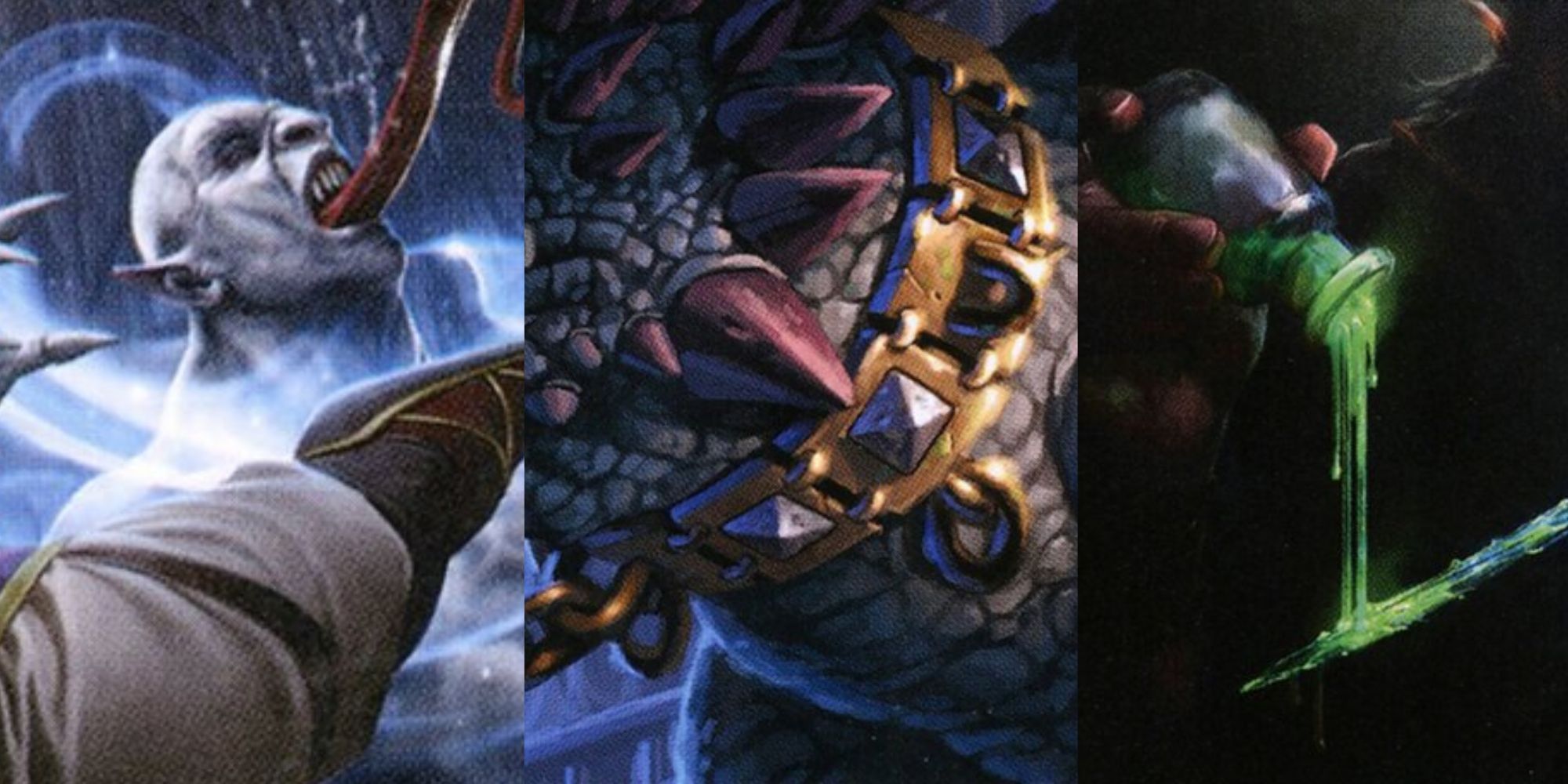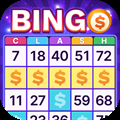Dungeons & Dragons: A Beginner's Guide To Conditions

Quick Links
- What Are The Conditions In D&D?
- How Does Exhaustion Work In D&D?
- Which Conditions Should I Use?
- How Can I Cure Conditions?
- Species Traits And Conditions
Status conditions are one of many tools in your arsenal in Dungeons & Dragons that are useful in both role-playing and combat. Need to sneak around or get someone to tell you something? The right status condition can help you. If you're in combat, then it's a good way to keep your enemies busy or make the waste turns, so your party can focus on healing or ganging up on a specific enemy.
RELATED: The Best Source Books For D&D In 2023
On the other hand, certain status conditions are a menace when they're used on you, and it's important to be prepared to get rid of them quickly, as they'll prevent you from fighting as effectively as you'd like to. Whatever the case, every self-respecting adventurer should keep conditions in mind while playing.
What Are The Conditions In D&D?
Yuan-ti Fang-Blade by Simon DominicProvided your Dungeon Master doesn't decide to home-brew something, there are 13 regular conditions you'll encounter. These conditions may be afflicted by spells, other creatures, or simply the environment.
For regular conditions, effects do not stack, so if you're poisoned and poisoned again, you won't receive twice as much damage. These conditions all have different effects and depending on your character's build, some may be worse for you personally, so it's good to have a decent idea of what all of them do.
The Player's Handbook lists incapacitated as its own condition, but you'll never be incapacitated without it being part of another condition, so it's not worth listing on its own.
Condition
Effects
Can Be Caused By...
Blinded
The creature cannot see, ability checks that require sight automatically fail, makes attack rolls with disadvantage, and attack rolls against the creature have advantage.
Being blindfolded, Color Spray
Charmed
The charmed creature cannot attack or otherwise harm the charmer, and the charmer has advantage on ability checks in social situations with the charmed.
Charm Person, Fast Friends
Deafened
The creature cannot hear and automatically fails ability checks that require healing.
Blindness/Deafness, Divine Word
Frightened
The creature has disadvantage on ability checks and attack rolls while the source of its fear is within light of sight, and it cannot willingly move towards the source of its fear.
Antipathy/Sympathy, Cause Fear
Grappled
The grappled creature's speed is reduced to zero.
Making a Strength check to grapple
Invisible
The creature is impossible to see without magic (though it can be spotted by sound or tracks). They are heavily obscured, and can make attacks with advantage while attacks against them are made with disadvantage.
Greater Invisibility, Invisible (spell)
Paralyzed
The creature cannot take actions or reactions, cannot move, and cannot speak. They automatically fail Dexterity and Strength saving throws. Attack rolls against this creature have advantage and if the enemy is within five feet the attack automatically crits.
Hold Monster, Hold Person
Petrified
The creature is turned to stone and cannot take actions or reactions. They have immunity to poison and disease, and resist all forms of damage. However, attack rolls made against the creature have advantage.
Flesh to Stone
Poisoned
The creature has disadvantage on attack rolls and ability checks.
Ray of Sickness, Contagion
Prone
The creature falls over and can only crawl or has to use half their movement to stand up. They have disadvantage on attack rolls. Attack rolls against this creature have disadvantage unless the creature attacking them is within five feet.
Command, Hideous Laughter
Restrained
The creatures speed becomes zero, and has disadvantage on attack rolls and Dexterity saving throws. Attack rolls against this creature have advantage.
Entangle, Web
Stunned
The creature cannot make actions or reactions, automatically fails Dexterity and Strength saving throws, and attacks against the creature have advantage.
Power Word Stun, Stunning Strike
Unconscious
The creature cannot make actions or reactions, drops whatever it's holding and falls prone, automatically fails Dexterity and Strength saving throws, and attack rolls against the creature have advantage and automatically crit if the attacking creature is within five feet.
Reaching zero hit points, Sleep
How Does Exhaustion Work In D&D?
Feign Death by Maria ZolotukhinaExhaustion is a special condition that's more complicated than the others. It can be inflicted by harsh environments or certain class abilities, such as a Path Of The Berserker Barbarian's frenzy.
Exhaustion is the only condition that can stack, with progressively more severe effects being added with each level, culminating in death.
Level
Effects
1
You receive disadvantage on ability checks.
2
Your speed is halved.
3
You have disadvantage on attack rolls and saving throws
4
Your maximum number of hit points is reduced by half
5
Your speed is reduced to zero.
6
You die.
You reduce your level of exhaustion by one whenever you take a long rest, or with spells such as Greater Restoration.
The fourth level evocation spell Sickening Radiance from the sorcerer list is currently the only official way to directly inflict exhaustion on a creature.
Which Conditions Should I Use?
Power of Pursuasion by Brian ValezaWhen considering which conditions you want to use, you'll usually end up choosing between reliability and potency.
For example, petrification is hard to heal and effectively removes an enemy from the field, but it also takes three turns to take effect and the opposing creature can stop it with a good role.
That's not to say you can't use it, it can certainly make for a dramatic moment in a campaign, it's just that it won't happen often unless you're really lucky.
With that in mind, frightened, stun, and charmed are in that sweet spot of being reliable and harming your opponents.
If you can learn invisibility, that can also come in handy for stealth and early rounds of combat.
How Can I Cure Conditions?
Potion of Healing by Pauline VossIf you're on the receiving end of a condition, there are several ways to cure even the most devastating ones.
In addition to various healing potions, here are spells that can cure or mitigate the effects of a condition.
If you're afflicted with the same condition twice, such as being frightened by multiple enemies, you have to resolve them one at a time.
Spell
List
School
Removes
Heal
Cleric, Druid
Evocation
Blindness, Deafness
Lesser Restoration
Bard, Cleric, Druid, Paladin, Ranger
Abjuration
Blindness, Deafness, Paralysis, Poison
Greater Restoration
Bard, Cleric, Druid
Abjuration
Petrification, Charm, One level of exhaustion
Calm Emotions
Bard, Cleric
Enchantment
Suppresses effects of fear and charm
Branding Smite
Paladin
Evocation
Invisibility
Faerie Fire
Bard, Druid
Evocation
Invisibility
Species Traits And Conditions
Half-Elf Monk by Zoltan BorosSome Species have traits that interact with certain conditions. Here are some notes for sticking points that may come up while building a character.
- Creatures with fey ancestry — such as elves, half-elves, and bugbears — are immune to being put to sleep through magic. This does not make them immune to the unconscious condition. They can still be knocked out by other means such as blunt force trauma or having their hit points reach 0.
- Yuan-ti currently only have resistance to poison as of Monster of the Multiverse. They previously had immunity in Volo's Guide To Everything, so make sure you double-check with your DM about which rule set you're using.
- Be sure to keep in mind the difference between having a resistance to a condition and simply having advantage against a saving throw. Dwarves get advantage on saving throws against being poisoned and if they are poisoned, only take half damage. Halflings have advantage against being frightened but if they fail their saving throw, they will still feel the full effects of being frightened
NEXT: Dungeons And Dragons: The Worst Status Conditions To Get













